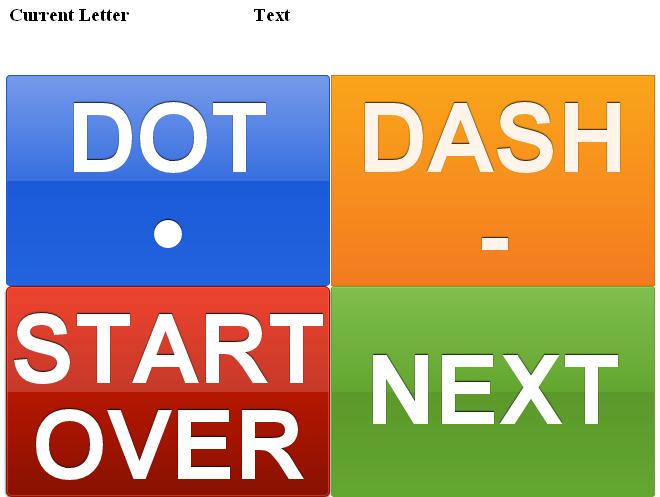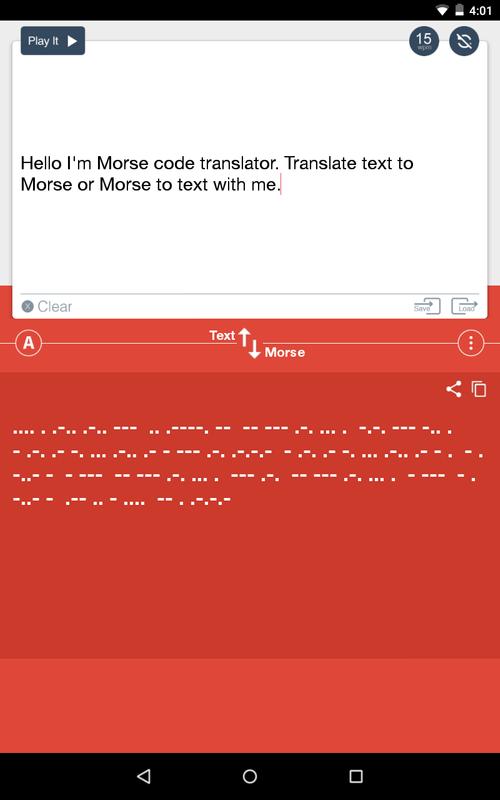

- Audio morse code translator how to#
- Audio morse code translator movie#
- Audio morse code translator series#
More information at the end of this description. In addition, you can unlock advanced features in the app if you need them: learning and social features. Note: By getting this app, you'll have access to several useful and fun features related to Morse code (these are the features explained in this description and visible in the screenshots). You can run it on your iPhone or iPad and it is compatible with VoiceOver. Out = paste(unlist(empty.Morse-it is an easy-to-use application that lets you translate, interpret, type, learn, convert Morse code, and more. # grouping letters into words based on word.ends vec:Ĭur.points = letter.vec] Letter.vec = unlist(lapply(empty.list, function(x))) # grouping the beep duration letters (l's and s's) into lettersĬur.points = ]Įmpty.list] = paste(cur.points,collapse = "") # recoding beep durations to long and short:ī = "l"ī = "s" Word.ends = which(as.numeric(pause.durs > p.2) = 1) # creating the letter and word end vectors: Pause.centers = ī = kmeans(as.numeric(names(raw.tab)),2)$centersīeep.centers = = kmeans(as.numeric(names(raw.tab)),3)$centers # note: this step needs to take the beep.durs data and the pause.durs data # few beep durs that are only 1 for now, hard coding these out: # note: for some files, there seems to be a few # create indices for change instances - these will be 1 and -1īeep.durs =.
Audio morse code translator how to#
If you’ve got ideas for how to improve things, definitely let me know on twitter – I’m the code: # initialize # The solution starts with a bit of a strange stamp, but the rest should be pretty easy to read. wav file is stored on your machine), then execute my code. wav (and make sure to change the file path for the sf.1 object to wherever the.

If you’d like to give it a spin, try downloading one of the example morse code files e.g. It’s still pretty fragile because the example sound files I’ve been using are computer generated, so the function won’t really work on Morse code ‘in the wild’ yet. ultimately not that bad though.įiguring out how to deal with the converted audio file was actually a lot of fun – after a few hours of tinkering, I arrived at a solution (copied below) which converts audio Morse code to text. The only bother here was needing to convert the sound files from. To get these into R, I used the readWave function from Uwe Ligges’ very cool tuneR package.

To start on all of this, I found a site with a bunch of example Morse code sound files, maintained by The National Association for Amateur Radio (there are a bunch of files here – ).
Audio morse code translator series#
Write down the series of short and long beeps on a piece of paper.
Audio morse code translator movie#
The movie features a bunch of scenes with bustling rooms full or workers intercepting (and documenting) encrypted radio transmissions, which are then passed along to Turing’s decryption device (bombe). A few months ago, I finally got a chance to see The Imitation Game (the new Alan Turing movie), which gave me an idea for a Sunday morning R hacking session.


 0 kommentar(er)
0 kommentar(er)
